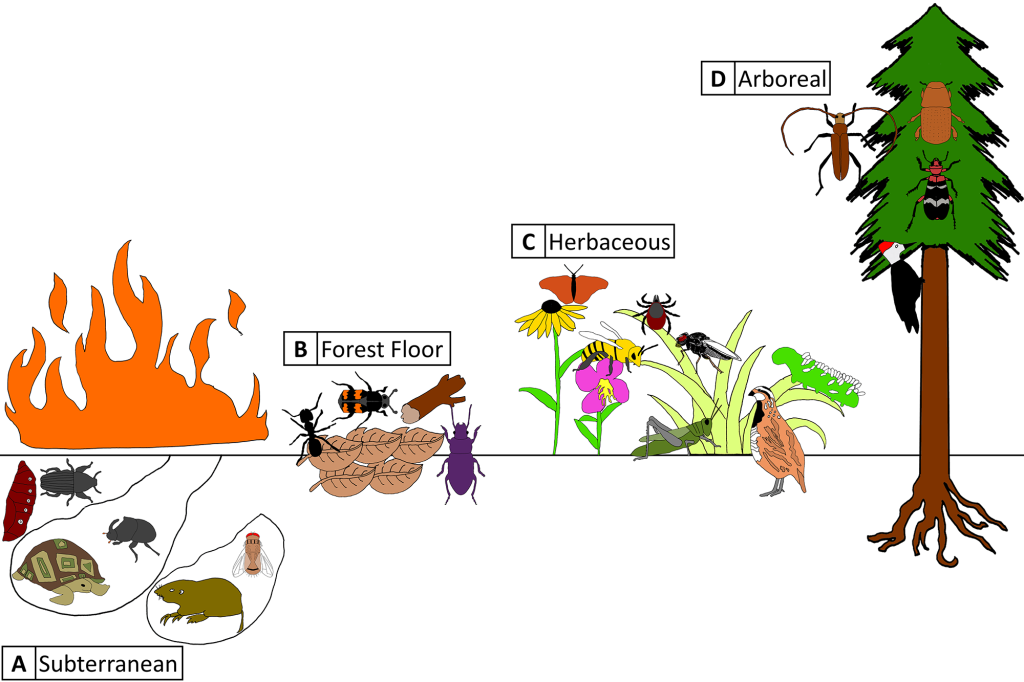Natural Resources Research & Management
Natural Resources Research & Management
Insects and other arthropods represent a crucial component of the longleaf pine ecosystem. They are decomposers, pollinators, nutrient recyclers, seed dispersers, prey, predators, parasites, and pests. In longleaf pine they do all this on a frequently burned landscape. While fire significantly affects arthropod populations and communities, this varies based on adaptations to fire, location within the forest structure, and land management practices.
We reviewed nearly 500 scientific publications from which we tabulated 51 orders, 477 families, 1,949 genera, and 3,032 arthropod species known to occur in longleaf pine ecosystems. This is certainly much lower than the actual total numbers existing in these diverse woodlands. Many groups of arthropods are notably absent or poorly represented in the literature. For example, cicadas, treehoppers, false click beetles, bee flies, and numerous other groups are all represented by a single species, despite having relatively high diversity in North America. (We suspect this is due to gaps in research rather than low diversity in the longleaf pine ecosystem.)
Much research in the past century includes studies of pests of pine, associated arthropods of wildlife, and pollinators, but several other areas of research within this field have received little attention. We demonstrate the clear need for further research on arthropods in longleaf pine, especially over extended periods of time. To address the issue of possible insect declines, and better understand populations in longleaf pine, we initiated the Trends in Arthropod Biodiversity Systems project.
Sheehan, T.N., and K.D. Klepzig. 2021. Arthropods and fire within the biologically diverse longleaf pine ecosystem. 115(1): 69-94. https://doi.org/10.1093/aesa/saab037
Tom Sheehan, tom.sheehan@jonesctr.org
